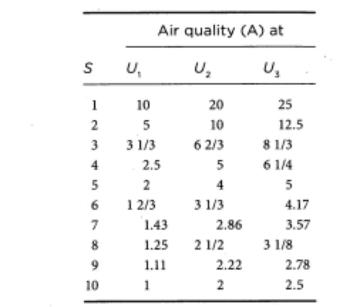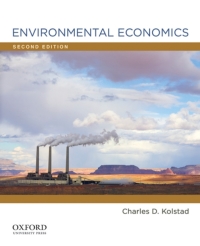We can generalize Problem 1 by stating that there are three commodities Felix consumes: air quality, soap,
Question:
We can generalize Problem 1 by stating that there are three commodities Felix consumes: air quality, soap, and a basket of other goods, denoted by \(x\). Anna concludes from her research that Felix's utility function is \(U(x, S, A)=x S\) A. The price of \(x\) is always 1.
Plot two restricted compensated demand functions for soap (price of soap on the vertical axis, quantity of soap on the horizontal axis). Recall that a compensated demand function depends on utility rather than income. One demand function should be for \(A=4\) and the other for \(A=5\). In both cases, assume the utility level is 100 .
Data from Problem 1
Anna was interested in Felix's preferences regarding air quality in Santiago. She reasoned that since air pollution could be washed off with soap, Felix should view air quality \((A)\) and soap \((S)\) as substitutes. Air quality is measured by an index, with larger values corresponding to higher quality. Holding annual soap consumption at five bars, she asked Felix to picture his utility with air quality at three different levels: 2,4 , and 5 . Call these initial situations 1,2 , and 3 , yielding utility \(U_{1}, U_{2}\), and \(U_{3}\). At each of these levels of air quality, she tried varying the amount of soap, asking how air quality should change to keep utility constant. During this mental experiment, she asked Felix to imagine his consumption of all other goods was fixed. She obtained the following data, showing values of \(A\) to keep utility constant at the three initial levels \(\left(U_{1}, U_{2}, U_{3}\right)\).

Plot the three indifferences curves for soap and air quality implied by these data.
Step by Step Answer:





